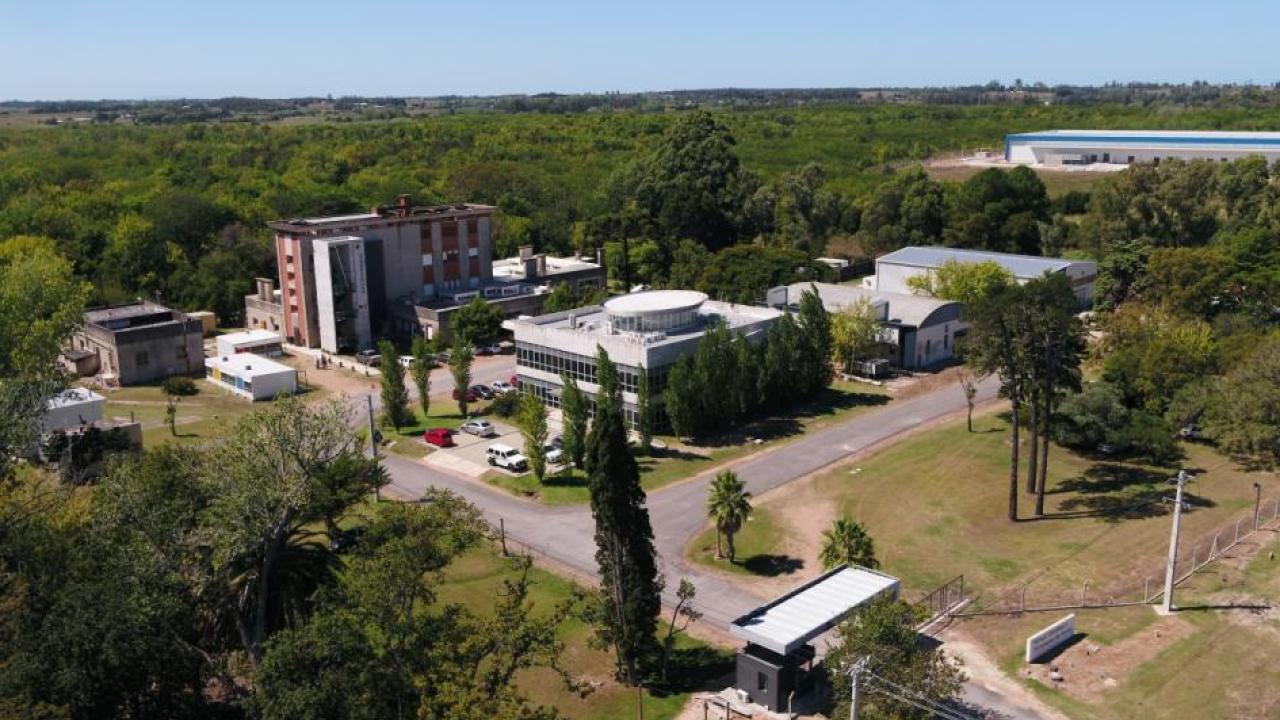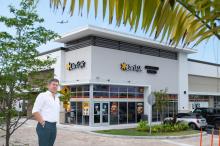
CBRE, a real estate services company, surveyed 7.5 million square meters of industrial and logistics parks in the country.
The multinational corporate real estate services and investment company, CBRE, surveyed a total of 7.5 million square meters (m2) of industrial parks, logistics parks and free trade zones in Uruguay, and highlighted the “attractiveness” of the Uruguayan market for the establishment of regional companies in these areas.
In a report published by the company after the market survey, it noted that the logistics and industrial hubs of the Uruguayan country “attract Argentine companies” and those from other countries in the region, mainly due to “logistical facilities,” tax benefits, geographic location and economic stability.
Following the market study, the multinational indicated that currently “the sector is concentrated in the hands of a small number of developers, mostly owners of industrial parks” and that the “strengthening of demand” for this type of logistics spaces is causing the main parks “to have a high occupancy rate and begin to expand to add more surface area to the market.”
However, CBRE pointed out that developers of these types of areas in Uruguay operate "almost exclusively under built-to-suit contracts" , that is, a tailor-made lease contract, which is built in line with the specific requirements of the company that will be established.
Karina Longo, research manager at CBRE Argentina, said that while developers continue to operate mostly under this modality, “the small amount of speculative land that is being built is aimed at meeting the demand of small and medium-sized companies that require smaller logistics spaces, although without sacrificing the quality of services.”
CONCENTRATION AND CONSOLIDATION OF INDUSTRIAL PARKS
After surveying 7.5 million m2 of industrial and logistics parks and 2.15 million m2 of free trade zones, the multinational calculated the consolidation ratio of each of these zones.
Among the main conclusions, Longo explained to El Observador that the triangle formed by routes 101, 8 and 102 “is the one that concentrates the largest volume of surface area, with 4.8 million m2 distributed in six industrial parks, of which two are the Parque de las Ciencias and Zonamerica free trade zones.”
According to the report, between them “they represent 38% of the surface area of industrial parks in the area”, with a concentration of logistics spaces of 25% in the case of Zonamerica and 13% in the case of the Science Park.
The report identified two of these areas around Route 5, the Grupo Ras Route 5 Industrial Park and the Las Piedras Industrial Park, which together cover 1.6 million m2, both with different levels of development.
Meanwhile, in the Route 1 corridor, CBRE highlighted two parks: Polo Oeste and Zona Franca Libertad, and detailed that between them they add up to 1.1 million m2, which means 15% of the total surface area.
Longo told El Observador that in order to more accurately analyze the logistics space market in the surveyed areas, they created a consolidation ratio that considers the surface area that makes up the park's service spaces, such as streets, parking lots, common areas, dry port yards for containers and automobiles, among others.
In addition, it also considers the built surface area of logistics spaces in each occupied lot, as well as its maneuvering yards, using the total occupancy factor (FOT) allowed for each park in some cases. As a result, they obtained the degree of consolidation of the park based on the occupied surfaces and the number of companies installed.
When analyzing this ratio, which is used to understand how much logistics space is occupied within each industrial park, Longo pointed out that the greatest development is in the triangle of routes 101, 8 and 102. The largest number of industrial parks are concentrated there and it is also the area that has the largest volume of logistics centers in terms of surface area, he explained.
Within this area, Zonamérica concentrates 25% of the total, Parque de las Ciencias 13%, Zona Este Industrial Park 9%, Camino Ventura Business Park 4%, Pando Industrial Park 3%, Roma 101 2% and San Juan Logistics Park 1%.
This is followed by the Route 1 corridor, in which Polo Oeste has 26% of the total surface area. In this corridor, logistics centers that do not belong to an industrial park stand out, the Punta Sayago Logistics Center and the Port Logistics Center, which contribute more than 65 thousand m2 of inventory, CBRE indicated.
On the other hand, in the logistics corridor of Route 5, the report highlighted the Industrial Park Route 5, which concentrates 9% of the total developed surface.
According to Longo, there are four areas that have the possibility of further expanding their surface areas: Zonamerica (232,730 m2), Parque de las Ciencias (200,000 m2), Parque Industrial Zona Este (200,000 m2) and Polo Oeste (100,000 m2).
THE OUTLOOK AND OPPORTUNITIES FOR 2025
Among the benefits of these zones, Longo said that they attract the attention of Argentine companies and other companies in the region due to the ease they provide for connections with Brazil, Chile, Argentina and Paraguay, as well as their proximity to the port of Montevideo.
In addition, Longo highlighted the positive aspect of the agreement signed between Uruguay and Brazil to ensure that production in free trade zones between the two countries is traded with 0% tariffs.
"The main attraction for companies seeking logistics space is the tax advantages that Uruguay offers for exports and imports, a phenomenon that has gained momentum in recent years and has had a positive impact on the logistics and industrial real estate market," the report said.
Meanwhile, Nicolás Ferrero, sales brokerage consultant at CBRE, said that this year, opportunities "will come from companies that cannot continue expanding their operations in the locations they currently occupy, which could motivate corporate relocation movements."
The multinational expects that in the second half of next year "the speculative rental surface will be completed, which will add 38,500 m2 to the market", although they estimate that "this figure will be insufficient to meet the current level of demand".









